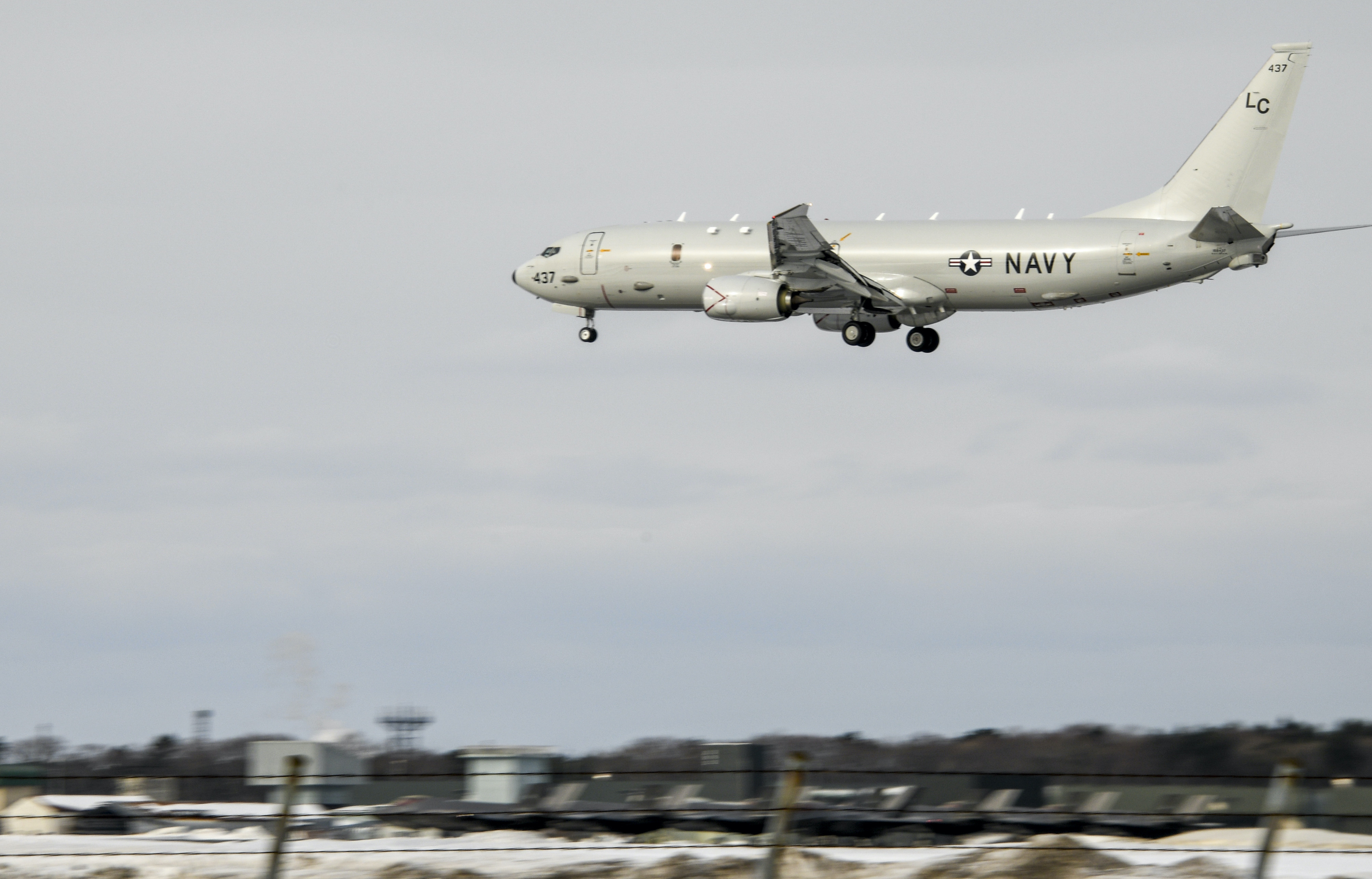
A “neighborhood watch approach” using coordinated American and allies’ unmanned systems and sensors could provide a continuous and effective, yet low-risk way to ward off Chinese ambitions across the Indo-Pacific, a new report from a Washington, D.C., think tank contends.
The Center for Strategic and Budgetary Assessment’s newest report, titled “Implementing Deterrence by Detection,” said that approach would “provide 24/7 awareness’’ and not the periodic monitoring of the Taiwan Strait or the South China Sea as envisioned in its 2020 study, according to Thomas Mahnken, the think tank’s president.
That new report, released Friday, sees enhancing deterrence by “establishing a multi-domain system of systems [that is] combining existing military assets with increasingly proliferated and available commercial assets.”
Christopher Bassler, one of the report’s authors, said the idea is “to employ the entire spectrum of ISR [intelligence, surveillance and reconnaissance].” Platforms ranging from large unmanned aerial systems like the MQ-4 Triton or MQ-9 Reaper to the Sail Drone afloat sensor or possibly Sierra Nevada Corp’s “Dream Chaser” space plane are “underpinning all this,” he said.
But the sensors from space, surface and subsurface platforms must be “knitted together” to be effective. The analogy he used to describe the “knitting together” was the Joint Integrated Task Force based in Key West, Fla.
While, as the report noted, regional multi-domain fusion centers would provide the core to the “neighborhood watch concept,” he said.
In addition, over time the report said AI could “potentially reduce the manpower associated with maintaining those capabilities, freeing up funds to invest in new technologies.”
Among the new technologies that Bassler mentioned were “line-of-sight communications,” also called laser communications, that would allow large amounts of data to move quickly from space to air to the ground.
Co-author Travis Sharp said that “to many [working in defense], the AI intelligence revolution seems incredibly far away.” But there are immediate steps that can be taken to speed up the workflow and also more fully grasp whether requirements have been fulfilled.
Instead of “manually entering requirements into Excel spreadsheets and distributing [them] by email,” AI could take over that task. At the same time, AI could see if requirements have been met by quickly going through all sensors covering the location or activity to determine completion.

Another advantage would be “A.I. could manage swiftly information” gathered from open sources like foreign newspapers, a task that is currently manpower-intensive and slow.
Swift said processing all this data today “is kind of like writing a literature review.” While “the current challenge is how do you cull data quickly [and] to concentrate on the most important” set of information remains difficult to do. Artificial intelligence addresses that problem and can automatically cross-reference, adding depth and context.
The report also noted that by offloading “certain complex tasks [of collecting and processing] to machines would also cost far less than buying entirely new capabilities.”
“Persistent surveillance raises doubt in adversary leaders’ minds that they can prepare for and execute a military operation without being detected” or exposed, the report said.
In commenting on the report at the CSBA event, Chris Brose, author of “The Kill Chain, Defending America in the Future of High-Tech Warfare,” said the Chinese may not care whether they have been exposed as acting aggressively. His example was Beijing ignoring protests over reclaiming reefs and turning them into militarized artificial islands to back up its excessive territorial claims in the South China Sea.
He said the “neighborhood watch concept” in the report “has to be an all-domain approach” using government and commercial assets, but it may prove very difficult to achieve.

“Deterrence by Detection aims to let the United States and its allies have their cake and eat it too by reinforcing nearer-term deterrence without undermining longer-term deterrence,” the report added.
But the report’s authors stressed that the concept is limited to observation, not retaliation as a factor in deterrence.
The risk, Brose said, comes in relying so much on legacy systems – even over items like a camera used by human versus one for machines – when a new one for machines would be better. Where possible, “we’ve got to get humans out of these loops.”
In addition, Brose said the question of “who’s going to own this” among the American services and also with allies when it comes to full integration is not answered in the report.
“There’s a tension here,” he said.
The report concluded that the United States and allies “need to gain a better understanding of our competitors.” In China’s case, this means “deeper insight into the deployment patterns of the People’s Liberation Army (PLA), China Coast Guard, and Maritime Militia; as well as a better understanding of the PLA’s tactics and operational concepts.”
Lastly, “the argument in favor of including U.S. allies and partners as interoperable contributors to such a network is strong. Given the changing military balances in the Western Pacific, the United States should seek new ways of informing and reassuring its allies and friends and galvanizing collective responses to crisis and aggression.”





